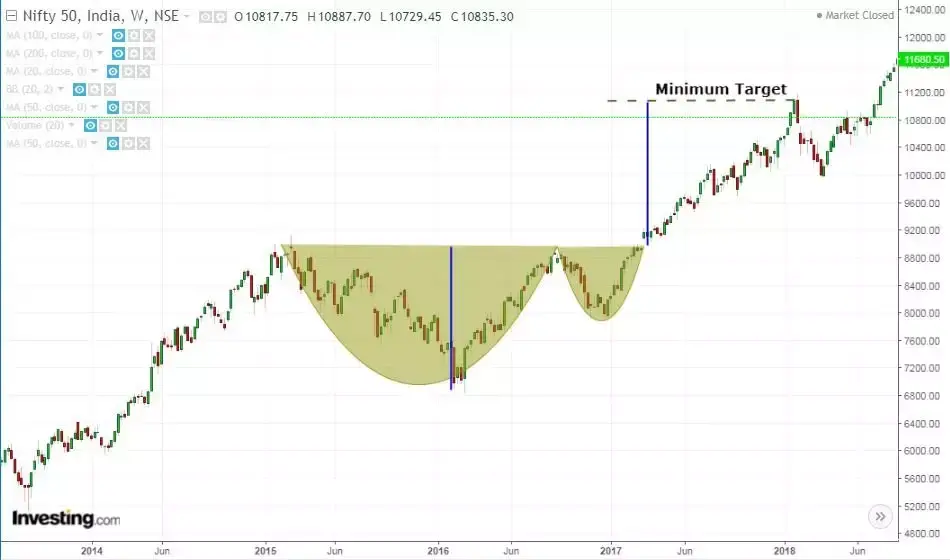Table of Contents
Bitcoin Reversal Pattern (Crypto Setting Up For Monster Pump)
As the crypto market continues to evolve, investors are always on the lookout for patterns and indicators that can help them make informed decisions about their investments. One such pattern that has gained significant attention in recent times is the “Cup and Handle” pattern.
This pattern is formed when the price of a cryptocurrency, such as Bitcoin, reaches a new high and then pulls back, forming a shape. If the price then breaks through the previous high, it can create a strong upward momentum, often leading to explosive growth. In this article, we will explore the “and Handle” pattern in more detail, examining its potential implications for Bitcoin and other cryptocurrencies.
The cup and handle pattern is widely acknowledged for its consistent ability to indicate positive trends. A smaller period of consolidation forms the handle after the price first declines and then gradually recovers to form a shape. The price usually experiences a significant upward movement after breaking out above the resistance level at the top of the handle.
What is the ‘Cup and Handle’ Pattern?
The “Cup and Handle” pattern is a technical analysis pattern that is used to identify potential buying opportunities in the cryptocurrency market. The pattern is formed when the price of a cryptocurrency reaches a new high and then pulls back, forming a “cup” shape. The is typically characterized by a downward sloping trendline, with the price bouncing off the trendline several times before breaking through it. The handle is the upward sloping trendline that forms after the price breaks through the cup.
How Does the ‘Cup and Handle’ Pattern Form?
The “Cup and Handle” pattern forms when there is a strong buying interest in a cryptocurrency, but the price is unable to break through a certain level of resistance. This can be due to various factors, such as market sentiment, regulatory uncertainty, or other external factors. As the price approaches the resistance level, it becomes increasingly difficult for buyers to push the price higher, causing it to pull back. This creates a “cup” shape, with the price bouncing off the trendline several times before breaking through it.
What Does Handle’ Pattern Mean for Bitcoin?
If the “Cup and Handle” pattern plays out for Bitcoin, it could be a sign of explosive growth ahead. The pattern suggests that there is a strong buying interest in Bitcoin, but that the price has been unable to break through a certain level of resistance. Once the price breaks through this resistance level, it could lead to a rapid increase in value, as buyers become more confident in their investment.
How Can Investors Take Advantage of the Pattern?
Investors who are looking to take advantage of the “Cup and Handle” pattern should consider holding onto their Bitcoin investments for now. If the pattern plays out as expected, it could lead to significant gains in the coming weeks or months. However, investors should also be prepared for potential volatility and market fluctuations.
What are the Risks Associated with the ‘Cup and Handle’ Pattern?
While the “Cup and Handle” pattern can be a powerful indicator of potential growth, it is not without its risks. If the price does not break through the resistance level, it could lead to further declines in value. Additionally, investors should be aware of other factors that could impact the market, such as regulatory changes or changes in market sentiment.
Conclusion
The pattern is a powerful indicator of potential growth in Bitcoin and other cryptocurrencies. If this pattern plays out as expected, it could lead to explosive growth ahead. However, investors should be prepared for potential volatility and market fluctuations. By understanding this pattern and taking advantage of it in a responsible manner, investors can potentially reap significant rewards in the coming weeks or months.

Comments are closed.